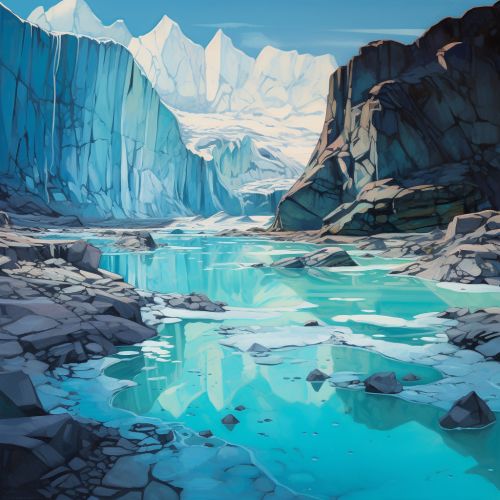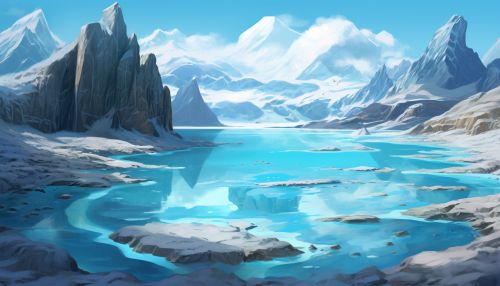Glaciers
Formation and Characteristics of Glaciers
A glacier is a large, persistent body of dense ice that constantly moves under its own weight. It forms where the accumulation of snow exceeds its ablation (melting and sublimation) over many years, often centuries. Glaciers slowly deform and flow due to stresses induced by their weight, creating crevasses, seracs, and other distinguishing features. They also abrade rock and debris from their substrate to create landforms such as cirques and moraines.
Glaciers are categorized by their morphology, thermal characteristics, and behavior. Cirque glaciers form on the crests and slopes of mountains. A glacier that fills a valley is called a valley glacier, or alternatively an alpine glacier. A large body of glacial ice astride a mountain, mountain range, or volcano is termed an ice cap or ice field. Ice caps have an area less than 50,000 km^2 by definition.
Glacial Movement
The movement of a glacier is a slow and continuous process. The rate of glacier advancement or retreat is determined by the volume of water in the glacier system. This water is derived from a combination of snowfall, rain, and melting ice. The rate of movement is also influenced by the gradient (or slope) of the land, the temperature, and the amount of friction between the ice and the ground beneath it.
Glaciers move through a combination of internal deformation and basal sliding. In internal deformation, the ice crystals in the glacier change shape and move relative to each other, causing the glacier as a whole to change shape and move. In basal sliding, the glacier slides along the ground.
Glacial Erosion and Deposition
Glaciers erode the underlying rock by abrasion and plucking. Abrasion occurs when the ice and its load of rock fragments slide over the bedrock, smoothing and polishing it. Plucking occurs when ice freezes onto the rock, then as the glacier moves, it plucks out pieces of rock. This process can create dramatic landforms such as U-shaped valleys and cirques.
Glaciers also deposit sediments in characteristic landforms. These include moraines, which are ridges of debris deposited at the edge of a glacier; drumlins, which are long, canoe-shaped hills; and erratics, which are large boulders left behind after a glacier has retreated.
Glaciers and Climate Change
Glaciers are sensitive indicators of climate change. Over the last century, glaciers around the world have been retreating at unprecedented rates and many predict they will continue to do so. This retreat has serious implications for water supply in some regions, as well as for sea level rise.


